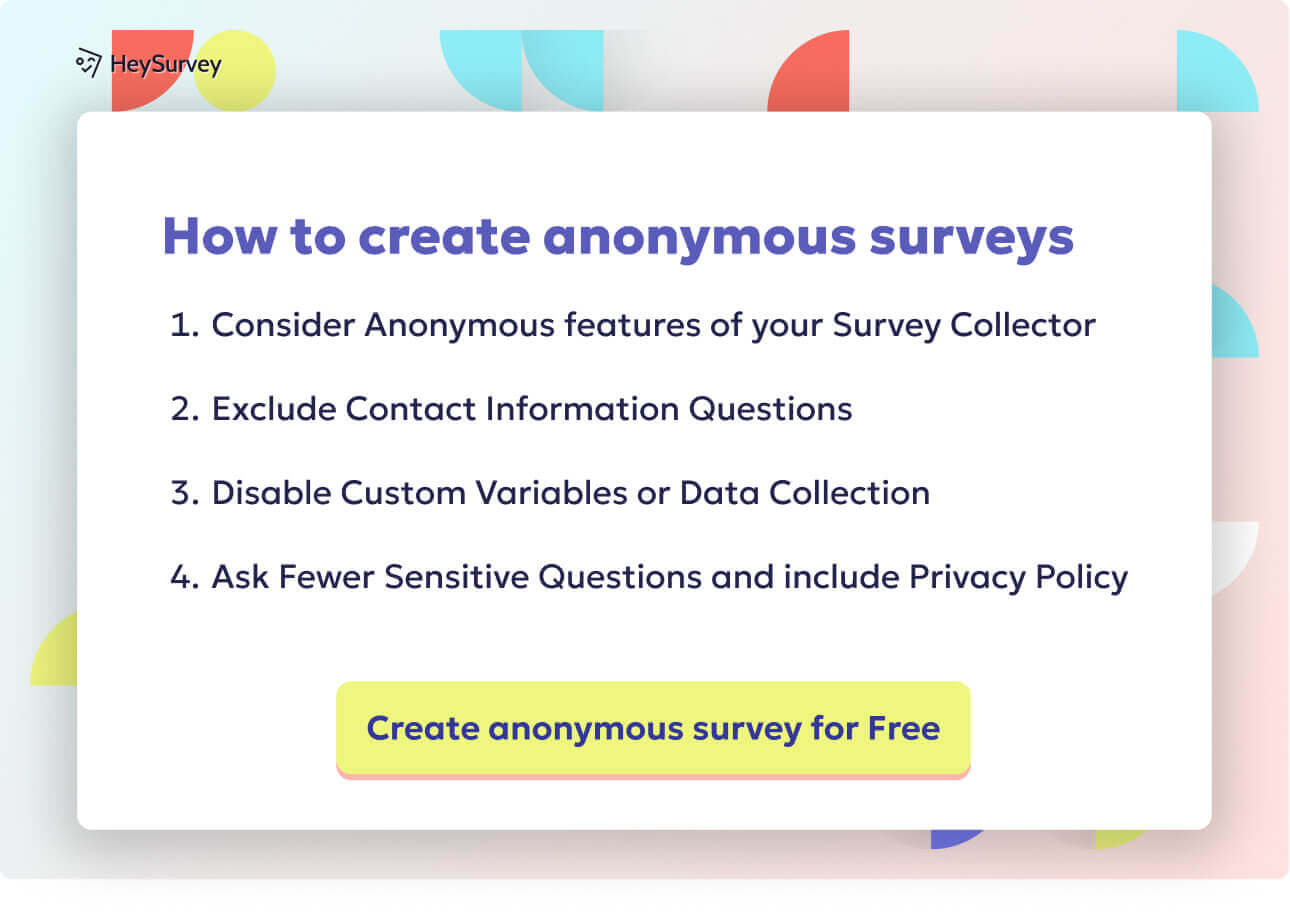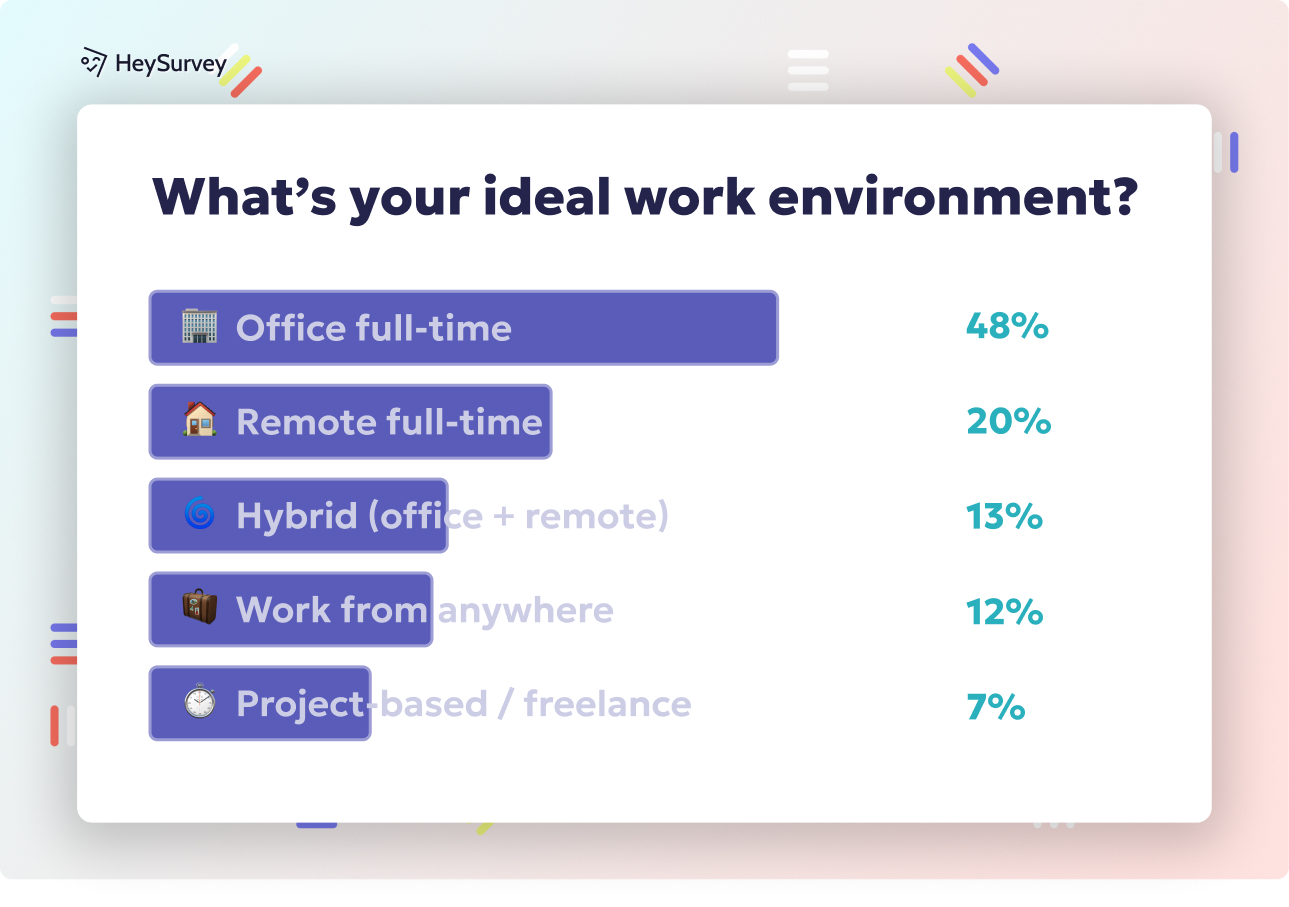33 Sustainability Survey Questions: Types, Use Cases & Samples
Explore 8 types of sustainability survey questions with 25+ sample questions to uncover insights on environmental impact and green initiatives.
Sustainability survey questions are your secret weapon for unlocking green opportunities in business, education, and governance. Whether you’re running a global brand or a neighborhood council, the right questions point you directly to greener choices and real-world impact. Today, we’ll dig into eight practical survey types—each with ready-made question sets—to help you target environmental footprints, stakeholder expectations, and compliance goals. Stick around for a pep talk on best practices at the end; you’ll be writing earth-friendly surveys like a pro!
Employee Sustainability Perception Survey
Why and When to Use This Survey Type
Want to know how your own team views your sustainability efforts? An employee sustainability perception survey is the place to start. By understanding how your staff perceives green goals and current practices, you unlock insights about your organizational culture.
- Gauge how much the team supports your mission
- Find out who’s eager to lead green initiatives (champions in disguise)
- Spot crucial knowledge gaps right before you roll out a shiny new sustainability program
When should you use this survey? Ideally, before kicking off a new initiative or prepping your annual CSR report. This survey shows where your starting line actually is, not just where you hope it is.
Plus, by bringing employees into the conversation, you foster buy-in and generate honest feedback—forget top-down mandates. Done right, this survey can inspire new workplace habits, reveal unexpected roadblocks, and help you focus your messaging for maximum effect.
Five Sample Questions
How strongly do you agree that our company’s environmental goals are clear and realistic?
Which three sustainability initiatives would you prioritize for next year?
How often do you participate in our recycling or waste-reduction efforts?
What barriers prevent you from adopting greener work habits?
On a scale of 1–10, how proud are you of our organization’s environmental performance?
This approach keeps things transparent and action-oriented, ensuring your green programs launch on solid ground.
Integrating environmental, social, and governance (ESG) practices into organizational strategies enhances employee performance and well-being. (arxiv.org)
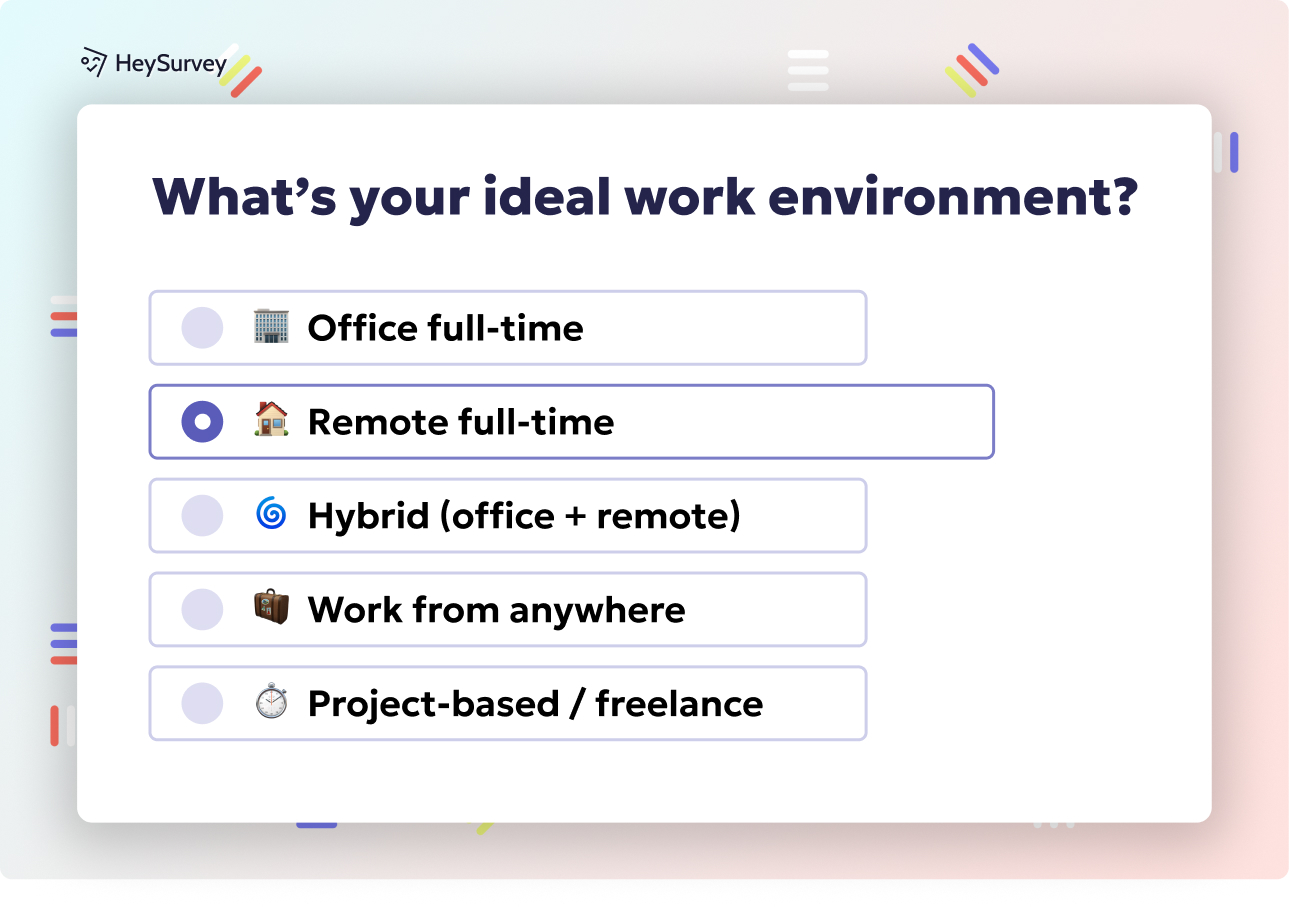
Creating your sustainability survey with HeySurvey is as easy as 1-2-3. Follow these simple steps to get your survey live and collecting insightful responses in no time!
Step 1: Create a New Survey
Start by logging into HeySurvey—or dive right in without an account if you just want to experiment. Click Create Survey and choose either:
- Empty Sheet to build from scratch, or
- Pre-built Template to jumpstart with ready-made sustainability questions.
Give your survey a name and hit Create to open the Survey Editor, your command center for all edits.
Step 2: Add Your Questions
Next, click the Add Question button at the top or between existing questions. Pick from question types like:
- Choice (single/multiple answers),
- Scale (Likert or rating),
- Text (for open-ended replies),
and more.
Enter your sustainability questions, tweak instructions or descriptions, and set which questions are required. You can spice things up by adding images or using markdown for easy formatting. To speed things up, duplicate similar questions or rearrange them by dragging.
Step 3: Publish Your Survey
Once your questions are perfect, preview your survey using the Preview button to see it exactly as your respondents will. When happy, click Publish. You’ll get a sharable link to send out via email, social media, or embed in your website. Remember, you’ll need a free account to publish and track responses.
Bonus Tips to Elevate Your Survey
Apply Branding: Upload your company’s logo and customize colors and fonts in the Designer Sidebar. This step gives your survey a professional look that reflects your green values.
Define Settings: Use the Settings Panel to:
- Set start/end dates for your survey run,
- Limit the number of responses,
- Redirect users to a special page after submission, or
- Let respondents view aggregate results.
- Set start/end dates for your survey run,
Skip into Branches: For an engaging and personalized experience, set up branching logic. Based on answers, survey-takers get directed to relevant questions only—making your survey shorter and smarter.
Ready to put your sustainability survey to work? Hit the button below to open a pre-built template and kick off your green data adventure!
Consumer Environmental Awareness & Purchase Intent Survey
Why and When to Use This Survey Type
Before introducing your next eco-friendly product, wouldn’t it be smart to know if your customers actually care? Enter the consumer environmental awareness and purchase intent survey—a fun, friendly tool to decode shopper values and willingness to pay a little extra to save the planet.
Use this survey:
- Before launching a new product
- While segmenting your market to see which audience loves green brands most
- After running a sustainability campaign to check for changes in attitudes
Knowing what your shoppers know (and what they don’t) helps you craft irresistible marketing and educational content. You’ll discover which eco claims move the needle and which are, frankly, a yawn.
Plus, these surveys make budgeting for green upgrades much less of a guessing game. If your consumers signal they’ll support your greener choices with their wallets, you gain the confidence to invest in recycled packaging, ethical sourcing, or carbon offset projects.
Five Sample Questions
How familiar are you with carbon-neutral product labels?
Which sustainability claims most influence your buying decisions?
What price premium (if any) would you pay for a product with 100% recycled packaging?
Rate the importance of a brand’s ethical sourcing on your purchase choice.
Which channels do you trust most for information on a company’s environmental impact?
A clever survey here can turn idle curiosity into real consumer loyalty—eco-wins all around.
Despite increased environmental awareness, many consumers do not change their purchasing behaviors due to factors like cost, convenience, and personal habits. (en.wikipedia.org)
Supply-Chain Sustainability Assessment Survey
Why and When to Use This Survey Type
A company’s green credentials are only as strong as its weakest supplier—so supply-chain sustainability assessments are not just a good idea, they’re essential for ESG leadership. This survey type helps you shine a light into every nook and cranny of your upstream partners’ practices.
Deploy this survey:
- When onboarding new vendors to clarify your expectations from day one
- As a regular check-in during annual supplier audits
- Whenever you suspect a risk or want to strengthen your next ESG report
Transparency and accountability are the name of the game. By surveying suppliers directly, you help weed out weak points, discover potential compliance issues, and set the stage for collaborative improvement—not finger-pointing.
And let’s not forget: joint sustainability Key Performance Indicators (KPIs) are much easier to agree on when you both start with honest self-assessment.
Five Sample Questions
Does your organization track Scope 1 & Scope 2 emissions?
What percentage of your raw materials are sustainably certified?
How do you ensure fair labor practices across sub-suppliers?
Describe any waste-reduction targets you have met in the past 12 months.
Are you willing to collaborate on joint sustainability KPIs with our company?
A healthy supply chain survey is your chance to create a resilient, risk-proof, and truly green partnership ecosystem.
Corporate Carbon-Footprint Baseline Survey
Why and When to Use This Survey Type
Diving into the deep end of climate action? The corporate carbon-footprint baseline survey is your map to uncharted territory, helping establish exactly where you are on the emissions scale.
This survey is vital:
- Before setting ambitious science-based targets (like those for SBTi compliance)
- Prior to choosing offset strategies or renewable energy investments
- For benchmarking and year-on-year tracking of progress
Knowing your carbon baseline allows you to spot which facilities, business trips, or operational quirks are running up your emissions tally. This, in turn, focuses your attention—and budgets—on areas that maximize impact.
With clear data in hand, your sustainability roadmap becomes much less guesswork, far more action.
Five Sample Questions
Estimate annual electricity consumption in kWh for each facility.
How many business-travel miles were logged last fiscal year?
What proportion of company vehicles are hybrid or electric?
Which renewable-energy sources are currently in use?
List top three operational processes contributing to greenhouse-gas emissions.
Solid baselining makes it way easier to tell a credible climate story to investors, regulators, and employees alike.
Conducting a corporate carbon footprint analysis enables companies to identify major emission sources and implement targeted reduction strategies, leading to improved operational efficiency and cost savings. (dge.ee)
Community Impact & Social Responsibility Survey
Why and When to Use This Survey Type
Ever wondered what your neighbors think of your big “green” promises? Cue the community impact & social responsibility survey—a tool that lets you listen rather than just lecture.
Use this survey:
- When going through permitting processes for new sites
- Before launching or reporting on CSR (Corporate Social Responsibility) projects
- Anytime you’re about to expand or kick off a high-visibility initiative impacting the local area
You’ll collect fresh perspectives on how you’re doing in the eyes of local residents, civic groups, and even future employees. These surveys help validate your community projects and ensure you’re not missing priorities like air quality, access to green spaces, or STEM education.
The feedback often bubbles up new project ideas you wouldn’t have considered in a boardroom—or highlights old community grievances before they become PR headaches.
Five Sample Questions
How would you rate our organization’s transparency about environmental impacts?
Which community programs should we prioritize: conservation, education, or health?
Have you noticed any positive or negative changes in local air or water quality?
How often do you engage with our sustainability events or workshops?
What suggestions do you have for improving our social-impact initiatives?
A well-designed survey here bolsters trust, goodwill, and deeper ties with the communities you serve.
Green Product Demand & Willingness-to-Pay Survey
Why and When to Use This Survey Type
Testing a brilliant new eco-invention? The green product demand & willingness-to-pay survey helps you decode the market pulse and fine-tune your messaging and pricing.
Consider using this survey:
- During the concept and product development phase to gauge what features customers value most
- When preparing for a big crowdfunding campaign
- In investor pitches to show solid data on price elasticity and market demand
When respondents share which green features matter—like energy efficiency, plastic-free packaging, or certifications—you avoid costly missteps and invest in what your customers truly want.
You’ll also discover just how much more (or less) buyers are willing to pay, reducing the guesswork for both pricing models and supply chain investments.
Five Sample Questions
Rank these eco-features (biodegradable, energy-efficient, reusable) by importance.
How likely are you to switch brands for a product with a 30% lower carbon footprint?
What maximum price increase would you accept for plastic-free packaging?
Which certifications (e.g., Fairtrade, B-Corp) most influence your trust?
Would you join a subscription model that reduces packaging waste? Yes/No/Maybe.
Tap this survey to turn eco-chic ideas into real products with enthusiastic buyers behind them.
Sustainability Education & Behavior-Change Follow-Up Survey
Why and When to Use This Survey Type
Just rolled out a sustainability workshop or challenge? The education & behavior-change follow-up survey checks if all that inspiration actually sticks and shapes real habits.
This survey fits best:
- 30 to 90 days after a training, campaign, or educational event
- When you want to showcase learning retention and genuine impact for future funding or support
- To spot which parts of your content moved people—and which fell flat
It also uncovers everyday hurdles holding your audience back, so your next program can be sharper and even more empowering. Plus, people love sharing which new skills or eco-hacks they’ve taught friends or colleagues since.
Five Sample Questions
Which workshop topic has most influenced your daily habits?
How frequently do you now carry a reusable bottle or cup?
What obstacles limit your ability to implement learned practices?
Rate your confidence in explaining sustainability concepts to peers.
Have you shared program takeaways with colleagues or friends? Yes/No.
A thoughtful follow-up here turns education into action—and action into lasting change.
Best Practices: Dos and Don’ts for Crafting High-Impact Sustainability Survey Questions
Ready to write your best sustainability survey yet? Keep these practical dos and don’ts on hand so your data delivers real insight—not just check-the-box numbers.
Do align each question with a clear KPI or decision point, so answers actually point the way to action.
Do use plain, non-technical language unless you’re surveying bona fide experts.
Do pilot-test for bias and scale clarity to keep your survey fair and results meaningful.
Don’t overload surveys—the sweet spot is usually 10–15 questions, maximizing completion and honest feedback.
Don’t mix double-barreled or leading questions; your data is only good if it’s clean and clear.
Do combine quantitative scales with open-ended prompts for a rich blend of metrics and human stories.
Don’t forget to communicate results and ensuing actions; transparency builds trust and boosts long-term participation.
Let these rules keep your surveys fast, focused, and genuinely impactful.
A little effort upfront in crafting your sustainability survey pays huge dividends back—whether it’s smarter business decisions, sharper eco-innovation, or stronger community ties. The humble survey? It’s where green momentum begins. Give it a try—and watch the data spark real transformation!
Related Business Survey Surveys
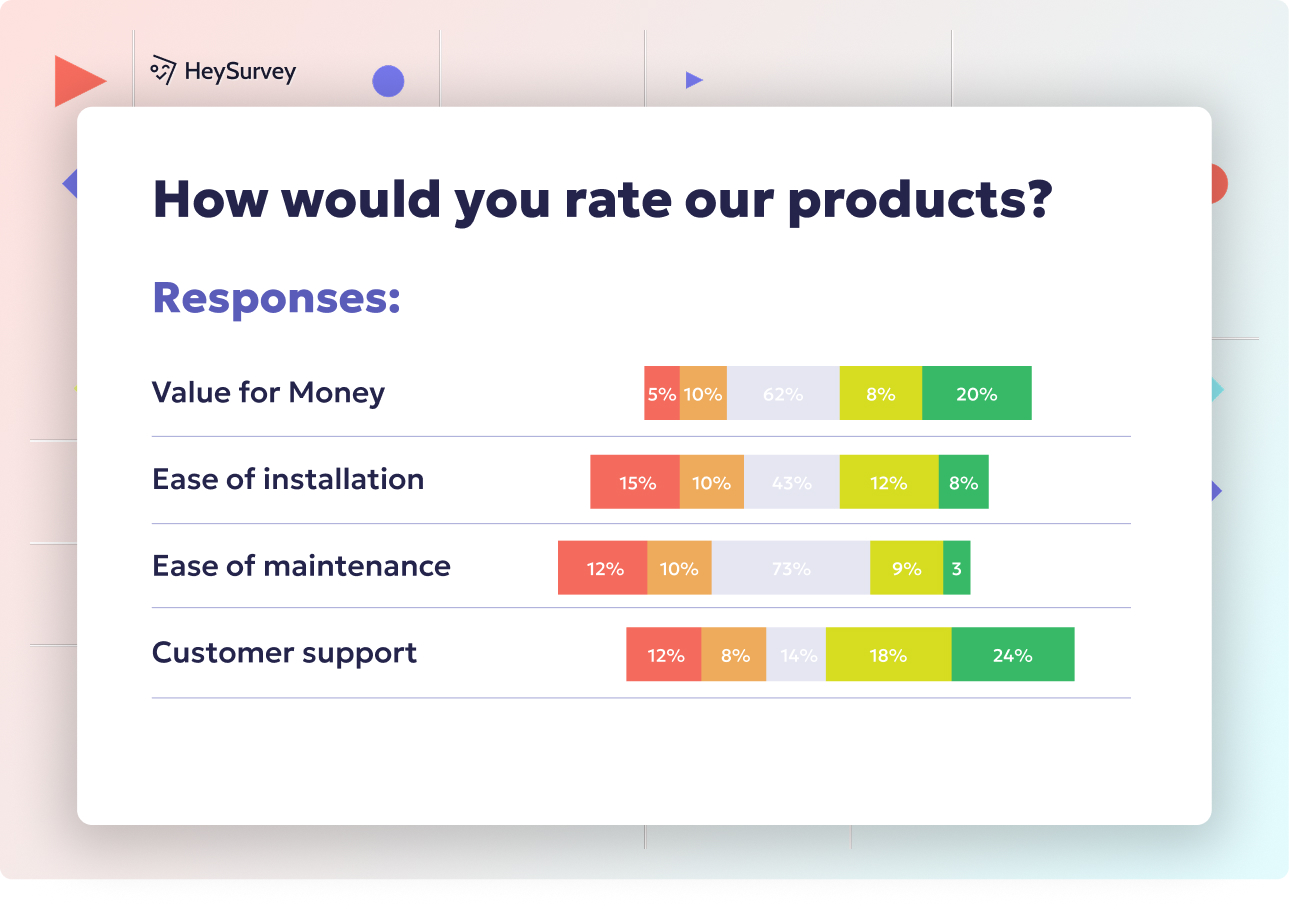
27 Tips to Tackle Nonresponse vs Voluntary Response Bias
Explore nonresponse vs voluntary response bias with 30 sample survey questions to improve survey ...
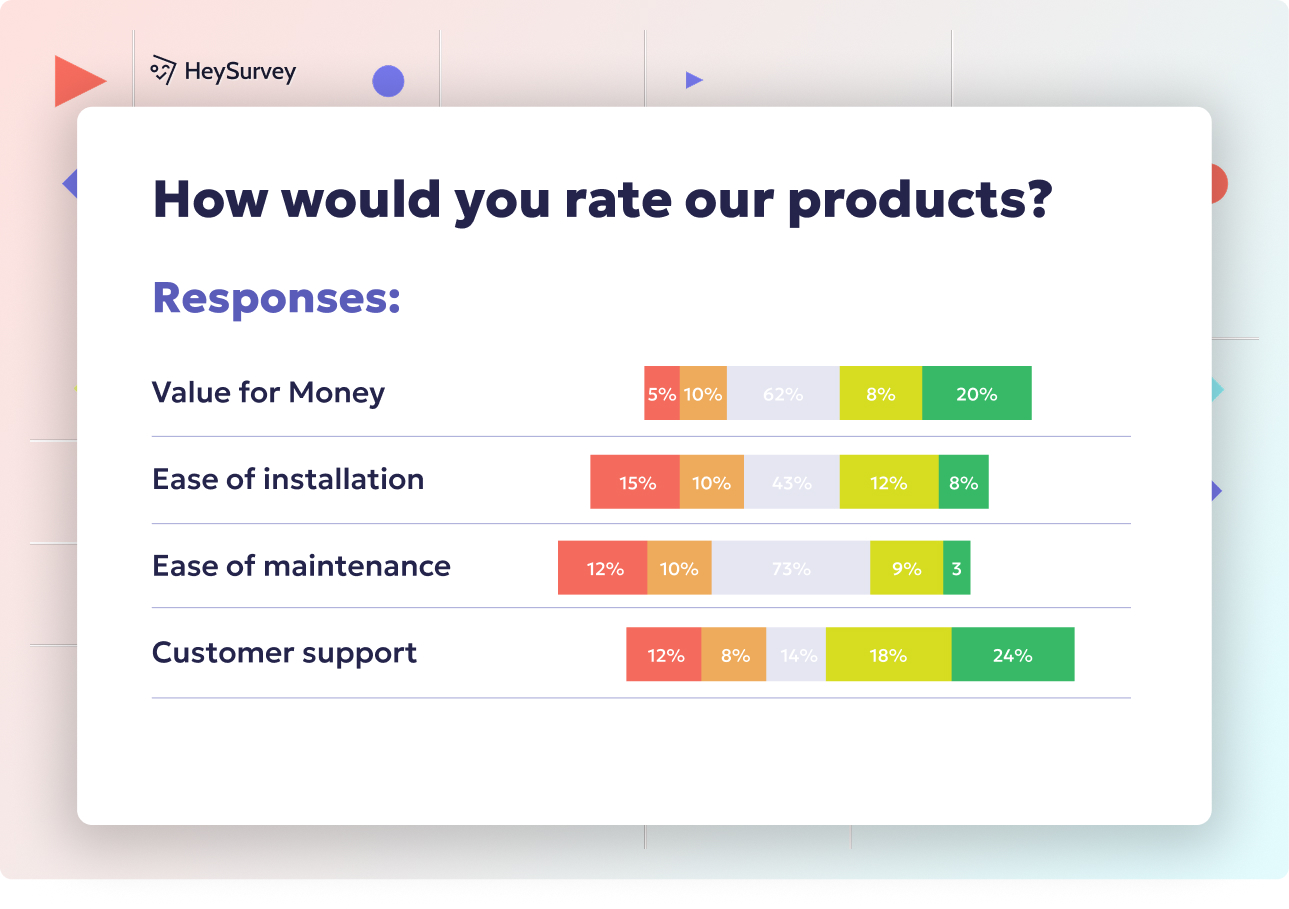
29 Essential SWOT Survey Questions for Strategic Insights
Discover 25+ expert SWOT survey questions designed to capture strengths, weaknesses, opportunitie...

25 Quality Assurance Survey Questions for Best Results
Elevate your approach with 25 sample "quality assurance survey questions" and best practices to s...
